Getting Radeon Vega Everywhere: An Exclusive Media Interview at AMD Tech Day, with CEO Dr. Lisa Su
by Ian Cutress on January 24, 2018 8:00 AM EST
In what is becoming an annual tradition, during AMD’s Tech Day here at CES we were given the opportunity to spend some time with Dr. Lisa Su, AMD’s CEO. Throughout 2017, Dr. Su has steered AMD through its return to high performance, offering significant competition in the x86 market on both consumer and enterprise, with a product ramp through 2018.
Our interview with Dr. Su in 2017 was all about Zen, Ryzen, and how AMD will be able to execute with its partners on a series of projects that could either make or break its core business. Turning AMD to profitability, reducing its debt, and expanding its user base has been no easy task, especially with the movement of key personnel at the top of AMD. However, the start of 2018 continues where 2017 left off: more Ryzen, more product updates, and more product opportunities, such as with Intel and semi-custom design. The key message we interpreted from AMD in 2017 was two-fold: evolution and expansion.
The AMD Tech Day has very much been a reiteration of those core precepts of evolution and expansion, although this time around AMD has the benefit of a growing user base and a competitive product.
Our interview with Dr. Su aimed to conclude the efforts of 2017, while looking ahead towards 2018 and AMD’s immediate future. This includes AMD’s R&D efforts, comments on the business partnership with Intel, comments about security, EMIB, ARM, and Automotive. We also discuss OEM relations and AMD’s 25x20 goal.
Profile:
Dr. Lisa Su, CEO of AMD. Born in Taiwan and educated at MIT, Dr. Su comes fully equipped with a Bachelors, Masters, and Ph.D. in Electrical Engineering. Before AMD, Dr. Su had appointments as CTO of Freescale Semiconductor, Director of Emerging Products at IBM, and a stint at Texas Instruments. It was at IBM that Dr. Su worked alongside Mark Papermaster, who is currently AMD’s CTO. Dr. Su was initially hired as SVP and GM at AMD, overseeing the global business units, and became CEO in 2014. A rare occurrence (unfortunately), but Dr. Su is one of a small handful of female C-Level Executives in the semiconductor industry. Dr. Su is consistently highly ranked in many 'top people to watch' lists of technology industry visionaries, and was recently featured in Fortune's Top 50 World Leaders alongside Jack Ma (Alibaba), Tsai Ing-Wen (President, Taiwan), Rebecca Richards-Kortum (Bioengineering, Rice University), and Elon Musk (Tesla, SpaceX).
Ian Cutress, Q1: AMD had a good year in 2017, from the point of view of the product, the brand, and AMD’s core financials. The question is not whether if it met corporate expectations, but did it meet your personal expectations? Did you get out of 2017 what you had initially thought you could get when you put your effort in? Or did you go beyond?
Lisa Su: I have to say if I look back on 2017, but not just 2017 the year but sort of the culmination of the last 3 years, it absolutely met our and exceeded our expectations. We are in our quiet period right now in early 2018 so I’m not going to comment beyond what we’ve said financially, but even what we said in our 4th quarter guidance would have said, we’re going to grow revenue well over 20% year on year, I mean that’s a good year. Putting all the noise aside, was every product launch perfect? Not everything was perfect, but you know, everything happened like we said it was going to happen. So I feel very good about what we accomplished in 2017.
But as you know, I have very high expectations, I like to say I still feel like we’re the 3rd inning of this game, we have a lot more to play. I feel like the last 3 years for me has been you know, the best 3 years of my career in terms of productivity but I think the next 3 years can be even better and that’s because I think the team really understands and is really focused on what we need to do and the opportunities are there. We’re still in the early innings but I’m quite satisfied.
Q2: Has AMD executed to plan, and is AMD in a good position?
LS: I would say just the sheer determination in getting the products out, and so we have executed, and it makes the company feels good. I think the engineering teams feel good but make no mistake - I mean, I know the competition is not standing still so, we're not sitting here resting on our laurels. We are absolutely focused on ensuring that we keep that competitive edge and that is where all our thinking is, like how do we make sure that we anticipate, you know? Because we are the smaller guy. So as the smaller guy we have to anticipate what might happen in the industry. We actually do in some cases take more risk than other people would, so that we can bring out some of that technology out faster.
We got a lot of comments about our EPYC four die (yes) multi-chip module, I mean I absolutely think that was the right thing to do. But again, that’s taking a little bit of risk into how you put something together.
Q: You fully expect that there will be other people who follow that methodology?
LS: I fully expect that will be true.
Q3: Last year you told me that due to the position AMD was in at the time, it was the equivalent of being put into a box, and that you have to think outside it in order to innovate. Now that you have a proven product line which is competitive both than performance and price, is that box still there?
LS: I think the box is there, I think the box is a bit different and so, you know, a few years ago the box was that we have to prove we can be on the playing field, so there was a very much “show me” attitude for the customers. I think that the box has changed, and now it is more around where should we go next. It’s more of a joint partnership statement, and so I think the box is actually expanding for us because we have the opportunity to really work with some of the top customers in defining what’s next.
I still think that we have to be very scrappy, very hungry, very aggressive. I will always believe that it is a very competitive world out there. But yes, we have to think outside the box, but we think outside of the box with our customers and our partners. Also, the market is good, and I think the market is generally receptive to new technology I would say.
Q4: This time last year, there were a lot of questions over how are you going to integrate with OEM partners and build those relationships, as those new relationships that haven’t really been there the last 5 years. Do you think you’re at a better place now with those relationships than you could have predicted back then?
LS: I think we are at a very good place with our OEM partners and relationships. I don’t think we’re done. I’ll give it to you in 2 categories: I think on the PC side, every OEM has invested in Ryzen and invested in Radeon, so I believe that we have those partnerships, but I also think that there is another step to do really optimized AMD capabilities. We know that there is a lot you could do in that optimization, so I feel great about where we are with OEM relationships, but I think we can also take another step further and that’s going to come this year with of the commercial platforms that you will see.
I would say the data center side has been actually very pleasantly encouraged with the resources that OEMs are applying to AMD EPYC and Radeon Instinct. I think that the number of resources allocated from the cloud vendors as well as the OEMs that they are very strongly committed to our product line and maybe that’s because they have a longer timescale that they think through and so, yes, I feel good about that, but I think there’s always more that we can do.
Q5: We spoke with Scott Aylor (GM of AMD Enterprise and Embedded) about the recent announcements on Azure and Baidu. That is 2 of the super 7/6+1, so more news to come in 2018?
LS: Absolutely, incredibly busy on both CPU and GPU to help the cloud guys get their platforms up and running.
Q6: With the launch for the 2017 products, the increase in market share, and the financial results, has that enabled AMD to expand into doing more projects simultaneously?
LS: It has definitely given us the affordability to invest more in our R&D. We invested more in R&D in 2017 than we did in 2016, and we will invest more in 2018 than in 2017. As our revenue grows, it gives us the opportunity to invest more. I think from my standpoint, those investments tend to be very much along the lines of expanding our capability, particularly in the graphics space, and around some of the software enablement because we believe that’s really important for us. And then, in the CPU space, we’ve had these multiple leapfrogging of generations and we’re going to continue to do that.
Q7: In this semiconductor space everybody goes after the low hanging fruit. With the recent launches on Ryzen Mobile and upcoming Ryzen APUs in Q1, are you getting all the low hanging fruit? What still needs to be picked? What really need to be hammered home in 2018?
LS: We have multiple product lines that we are working on, I think the low hanging fruit, or the ‘largest opportunity’ is really the wide spread adoption of Ryzen with OEMs. I would say that in 2017, it was much more the DIY market and people who build their own systems. I think in 2018 it is around the Ryzen Mobile systems and Ryzen commercial systems. I think that it is a big opportunity for us. I think GPU compute is a very large opportunity for us and then I think getting a full ramp of EPYC.
I think we are very deliberate in how we’re working with customers on these things, so it is a place that is very much within our control. If you call that low hanging fruit, then I think it’s a place where the products out there now means it is about good for the market and moving from designing into revenue.
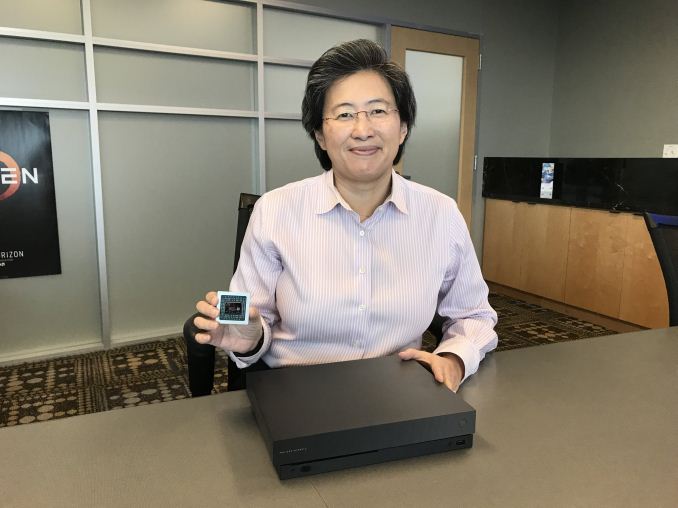
From @lisasu
Q8: If we look market share numbers, there are a few surveys that have not put AMD in the best light. Some are showing an influx of Chinese players playing games like PlayerUnknown’s Battleground (PUBG) and have seen AMD’s market share drop because they are all using competitor hardware. Is that a concern?
LS: You know, I think put aside any particular sort of game as they come through (and certainly PUBG is very popular in China), I believe that these are all points in time. So when I look and you’re talking about graphics market share, I look at our graphics product line and we’re going to continue to be very aggressive with that product line. We certainly have all of the OEM relationships that are out there with Apple down to the iMac Pro and HP, Lenovo, Dell, they are all heavy users of our graphics capability. In China, we are doing some additional marketing efforts. China is a very important market for discrete graphics so I’m not concerned about any particular point in time. I would say that we’re selling lots of graphics cards and it’s a very good market for us right now.
AMD recently announced a partnership with JD.com to promote Ryzen more widely in China. AMD's news post is here.
Q9: One of the things with every new processor generation is the talk about IPC, and how can we increase base performance. This comes down to the microarchitecture but also instruction support. Now there are products on the market that focus on wide vector support and they use that as a way to say that their IPC has increased, this is not necessarily something AMD has focused on with the CPUs. Obviously AMD looks at new ways to support instruction sets, but how does new hardware support and instruction support like vector processing come into the equation?
LS: I think we always look at what the trade-off is in terms of adding the extra instructions. I believe that we’ll absolutely look at it over time as it relates to overall performance. We actually think that even without the special vector instructions that we’re doing very well in floating point performance and so I think that our architecture is optimized well. To get to your question: will we consider some of these new instructions? Yes, we will, and we will figure out what the right timing is.
Q10: With the Zen core and the Zeppelin design, AMD essentially has one version of its silicon for PC/enterprise and one version of silicon for the mobile parts coming out the factories. If AMD had the resources and budget to have a wider silicon design portfolio, would there be more scope to trying for more esoteric IPC gains for specific product lines?
LS: I think that our CPU roadmap actually is very ambitious and I think microarchitecture is one piece of it. What you heard from Mark Papermaster with what we’re doing in terms of cross-chip interconnect and power management, and then system-wide thinking in terms of how we put the chips together. I actually think it is not a resource constraint problem necessarily, it is really more about where we want to focus our efforts on the CPU side.
On the GPU side, we have multiple teams that are looking at how to improve the instruction set as you go forward and I would say that we are thinking on the compute aspect of GPUs. How do we think about sort of the traditional GPU engines to special accelerators, things like that.
Q: Does that mean that there is room in the future for GPU bifurcation, between a gaming focus and a compute focus?
LS: I think there is. You will see us move on this, and we’re very committed to gaming so that’s not going to change, but you will see us do some more purpose-built products for the compute side of things.
Q11: So far AMD has a very publicly discussed its Infinity Fabric interconnect, and external interconnects in the form of interposers. The competition is currently parading EMIB (embedded multi-die interconnect bridge) technology which is being used in conjunction with Vega graphics. With what AMD has shown we are seeing much tighter interposer technology being used on the latest products. Is there scope for AMD to produce an EMIB like technology, or are you sticking your foot firmly into interposers for the near future?
LS: Without directly commenting on EMIB technology, what I would say is we are looking at all forms of multi-chip technologies. I think that interposer is one that we’re using and using widely in production today but we have a tremendous amount of research going on in this area of how do we put chips together and so, you’ll see us do more I think will be an area that will we continue to be investing and be aggressive.
Q: How much of that research is done predominately by teams internally versus collaborating with a foundry partner?
LS: Very much in collaboration, very much. I think that this is an area where we will work with foundry partners, we will work with OSATS, but our use case tends to be an extreme use case or an aggressive use case. And as a result, I think that the partners are very interested in working with us because we can be a technology driver for some of these technologies.
Q12: How is the search for a new head of RTG? Are you looking somebody from the outside or from the inside?
LS: We are making very good progress – we will be filling the position from the outside. Like I said, graphics is very, very strategic to us and so when we’re ready to talk more about that, I’m sure we will.
Since we asked this question, AMD has announced it will be hiring David Wang as SVP of Engineering at RTG and Mike Rayfield as SVP+GM of the RTG Business Group, effectively splitting the role. AMD is also moving its semi-custom business under RTG. You can read our report here.
Q13: In graphics, NVIDIA has recently announced that they are dropping support for 32-bit operating systems. Is that something that has been discussed internally?
LS: It is a trade-off, you know, and we do look at the fact there’s a very large legacy base that you have to validate as you go forward, but we haven’t anything specific to say on that topic at this point.
Q14: At the Ryzen Mobile launch, we got an in-depth look into how AMD is calculating for its 25x by 2020 goal, and we followed the math on how that was calculated. What intrigued us is what is going to have to happen between now and 2020 to hit the goal. Obviously, you feel that the goal is progressing and it’s going to be hit, do you feel it’s going to exceed? Part of the 25 by 20 calculation is to do with the system underneath the processor produced by an OEM partner, so some of it is out of AMD’s control. Does that worry you in any way?
LS: It doesn’t Ian, and I’ll tell you why. The way I look at it is that I’ve really been amazed with what you can do around power management and system power management and from silicon and software and system optimization together. When I say I’m amazed, it is just from being in the industry for the last 20 years and thinking about how we used to do things and how we do things today and the 100’s of sensors that we have and the incredible micro-control we have - I think that the tuning knobs are amazing.
I believe that not every partner will go extreme on 25x20, but we will get a couple of partners to really take advantage of those capabilities. In some sense it is on us to show them what we are capable. The Raven Ridge/Ryzen Mobile design was sort of like the first step, but we are nowhere near done with everything that can be done, so you are going to see that power profile get better and better as new systems come out. So yes, I am very optimistic about the whole, like I said, I am simply amazed with some of the things that you can do, or we can do with in partnership with the OEMs.
Q15: Do you feel like OEM partners are listening to guidance when it comes to system design?
LS: They are much more engaged than they have been in the past and frankly, we are also in their labs. We have a number field application engineers in their labs helping them to optimize their systems.
Q16: On the 25x20 goal, we predicted 3 pathways for AMD to go. So, high performance for the same power, medium performance increase for medium power saving, or the same performance with a big increase in general efficiency in, say like, a 5W product that has the current performance of Ryzen mobile. Would AMD consider playing in that 5 watt space?
LS: I think we could do it, but we wouldn’t necessarily design a product just for that market. These products have a lot of scalability and you may be able to use the products down to that point.
Q17: For 7 nanometers, AMD has stated that the first product for this node is Vega and the focus is on machine learning. Some might feel that it is a bit odd for the first 7nm product to be on an existing GPU architecture and for the enterprise market. Do you have any comment?
LS: I think that we always think about this very systematically, as to how we bring out new process technology. In this case it made a lot of sense to bring Vega down to 7nm. Vega, as you know, is practically a brand-new architecture and it has only been out since August, so we believe Vega has legs. We have so many new features in Vega, such as adding some of the compute centric features – but the beauty of 7nm is density and the power. When you think about just how much compute horsepower you can put in the new technology, it made sense. We usually start with the GPU; the GPU is usually for us the first product in a technology. Graphics does have the capability for a lot of redundancy on it and so we feel like it’s a great utilization of the technology.
Q18: With GlobalFoundries 14nm, it was a licensed Samsung process, and 12nm is an advancement of that. 7nm is more of a pure GF design. Is there any change in the relationship as a result?
LS: So in 7nm, we will use both TSMC and GlobalFoundries. We are working closely with both foundry partners, and will have different product lines for each. I am very confident that the process technology will be stable and capable for what we’re trying to do.
Q19: Do you feel like that the numbering system of process technology gets people confused?
LS: Yes, it probably does! You know, I don’t get to name processor technologies, but I will say though Mark Papermaster made the point today that the 7nm node is a very competitive node, and we do believe that the gap to the competition’s process technology is closing and that’s a good thing, right?
Q20: One of the things we found with previous mobile AMD launches was that the reference designs were not that great, and were built to a price point rather than trying to showcase the best of the platform. Did that change with Ryzen Mobile?
LS: I think it’s gotten better. If you take a look at the first couple of [Ryzen Mobile] platforms, I think they are better, and I still think that there is room for the platforms to be an even better showcase of the products. I would say that the OEMs are, in some sense, surprised with how good Ryzen Mobile is and from the expansion of the capability. I would say that the first couple of platforms were there to clean the pipeline a little bit and what you’ll see in 2018 is a much broader set of platforms including the commercial platforms.
Q21: The partnership with Intel with their new chip [Intel with Radeon], obviously AMD is very happy with that relationship and very confident?
LS: There are some people who might think it is an odd relationship but I think the relationship is representative of the world we live in today. Today it is very much around the fact that you can compete in some areas and you can partner in other areas. In this particular case, the way we looked at it is whether it would expand the market for Radeon.
I think Intel had an interest in using a Radeon graphics custom chip, and we’re selling silicon, and as a result we saw it as a positive for us. Obviously there are areas that we are going to continue to compete very fiercely, and in this area, we are going to partner. We have been partnering with Intel regarding the discrete graphics side for some time, in terms of making sure that our chips work on their hardware. So this has taken that partnership to another level.
Q: Is this collaboration a multi-year, multi-generational project?
LS: We haven’t announced anything beyond the first product so I would say let us get through the first product and we will see where it goes from there.
Q: The relationship between Intel, AMD and Samsung/Hynix doing the HBM - is it up to Intel to ensure it all works together given AMD is just selling the graphics chip?
LS: Well I think there’s work for us all to do together, but certainly the assembly is Intel’s responsibility.
Q22: Part of the question on the relationship between AMD and Intel is about how much of the chip is custom, and if Intel had a list of requirements how difficult were they to implement?
LS: I think with any collaboration there is a conversation around what the goals are. The goals of this partnership were around how can we build a very highly integrated CPU plus GPU with a certain set of performance characteristics. This is what we do in any semi-custom engagement - the customer has a set of goals and we say how we believe those goals can be met and there is some conversation and agreement about what the final product is.
It was actually very straightforward in the grand scheme of things. We build lots of graphics chips and so this was something specific to their requirements.
Q23: Will you be tuning into Intel’s keynote or will you just get a report from somebody?
LS: I will probably get a report from our team, but you will probably be sitting there so you can give us a report and we’ll read it!
Q24: Are you glad to see HBM2 on your AMD products? Is it still too expensive for the mid-range?
LS: It is a great technology, it really is. I think right now as you know there’s a real tightness in memory supply around the world, but put that aside (and by the way as that’s true for G5, that’s true for DDR4, that’s true for HBM) I think HBM is a great technology. I think over time we’ll see it become more cost effective, but it is still certainly on the higher side in terms of cost.
Q25: Several years ago, there was the expectation that AMD would be producing a number of ARM based processors, and then we got the singular A1100 product. Then it fell by the wayside: are there any plans along those lines anymore? Or is it evaluated?
LS: We continue to do ARM-based development in a couple of areas. We have custom products around ARM, and we actually use ARM in our PSP as you know. We always look at ARM, and if it makes sense down the road to introduce another ARM standard product, we’ll consider that.
But the focus for us has really been around x86 and our GPU roadmap. Part of what we have done is really focus the R&D efforts. I still believe that there are lots of good places for ARM in the industry so we’ll continue to take a look at that.
Q26: With the news about Meltdown and Spectre, obviously you guys have been working on it internally for a while, has this caused any insignificant shifts in thinking about R&D and design for future products?
LS: We all take security very seriously, and we have been working for a while on these particular issues that have been brought up. We have always thought about security from the beginning, so you know, if you take a look at sort of the mindset of processor development, it has always been at the front and center in our development methodology. I don’t think it changes necessarily how we think about future development, but I think it is very clear though that everyone has to be vigilant around security and so, that’s very very clear.
Q: With the intended announcement date of the 9th of January, and everything coming out early, do you think AMD’s message regarding the issues was able to be put out there how you expected?
LS: I would say is that there has been an incredible amount of information coming out of the last 3 or 4 days. With it, not everything is going to come out perfectly. I think we continue to view it as that this is a long term thing, not a short term thing, so there is not a one specific press release or one specific patch that’s going to say everything is fixed.
What we do believe is that we have been very clear on where we think we do not have an exposure and where we think that there might be an exposure and what we’re doing about it.
Q: In some cases, AMD has said that some products aren’t vulnerable and other people are saying that AMD products are vulnerable.
LS: I think this is where the ‘Devil is in the details’, and so with the Meltdown variant, we believe that our microarchitecture is just not vulnerable to that particular thing.
With Spectre, the 2 variants, that our architecture is susceptible and what we’ve said is there would be some OS patches that will be helpful and also there is a set of work that needs to be done relative to how these things actually come out in real life. So it is a very complex problem and we want to be sure that we’re giving it its full attention. We are taking it very, very seriously and in particular, making sure that our customers are very clear on where we are.
Read AMD's latest updates on Meltdown/Spectre here.
Q27: Some of the thoughts in my mind are going back to the financials of AMD. AMD's last earnings pointed to returning to profit, but when can AMD be considered financially healthy?
LS: I would say we are very healthy. You know, some of our investments are going to be in better computing systems for our engineers and so on and so forth. So yeah, I feel very good about our ability to invest and you know, honestly, it is not at the forefront of my mind. At the forefront of my mind is there are so many areas that we can broaden our perspective in our base business in PCs and graphics and data center to the machine learning and machine intelligence markets. There is a lot of pull in automotive and those markets, so there are a lot of things for us to do, so I don’t think about financially if we are healthy that often, as I think we are very healthy. I think more about how do we choose where to put our eggs because there are so many interesting places.
Q28: You mentioned automotive and it was mentioned during Tech Day, though obviously everybody who is working in automotive currently now is several years down the line compared to AMD. Do you actually feel like AMD can make headway in that space with so much in flux?
LS: I think there is. I think it is a long term market, so today we’re really talking about 2020 and beyond so it is not a necessarily short term sort of opportunity, but I do think our products are very capable and you know there is some actually pull from the market.
Q: Is it up to somebody else to apply AMDs product into an automotive context or is it something AMD should be doing itself? Your competitors design a platform and push it out to their partners, is that the same route that AMD has to take?
LS: It has to be a collaboration: I think that our view would be that we would work closely with lead customers to build those initial platforms.
Q: So you would aim for a highly individual, optimized platform with a specific customer rather than a general platform to offer?
LS: I think that would be the way we enter the market is through the customer relationship.
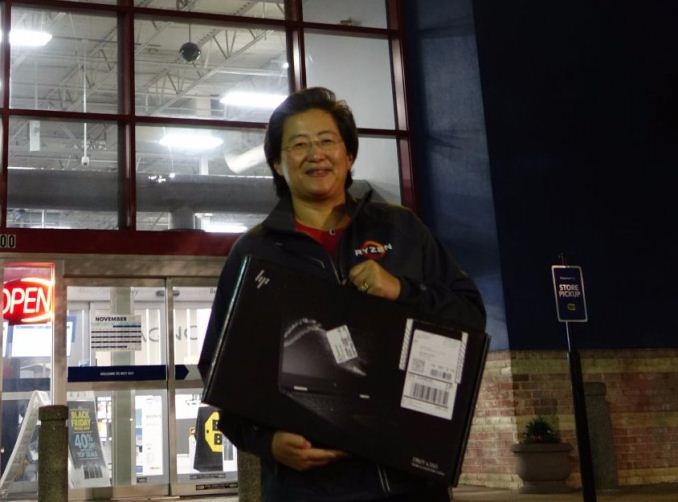
From @lisasu
Q29: Something a bit different and a bit more personal: How do you integrate into the gaming community, and what system do you have at home?
LS: I hate to tell you this, but I have every system, I mean I do. The issue is that my husband is a hardcore gamer so we do really have every system at home. We have every game console at home, we have Ryzen 7, Vega 56, Vega 64, we have Threadripper 1950X, 1920X, and we have more systems than we should. We have ASUS ROG laptops at home as well - we have just a lot of different systems.
[The picture above shows Dr. Su buying a Ryzen Mobile HP Envy from BestBuy]
Q: What system do you use in the office?
LS: I don’t have it here but we have a system that we had built specifically with AMD branding on it so I actually use an AMD branded notebook that currently is still Bristol Ridge. I have not switched over to a Raven Ridge notebook yet, but it has quite good battery life. I decided that if I use anybody’s notebook, I am going to appear as if I have favorites, so I’m using an AMD branded notebook.
Many thanks to AMD, Dr. Su, and the team for this opportunity.


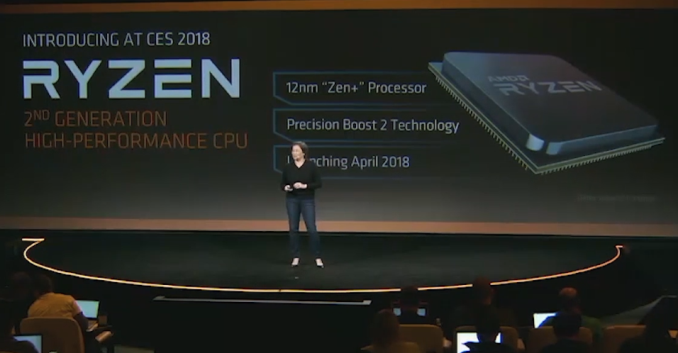
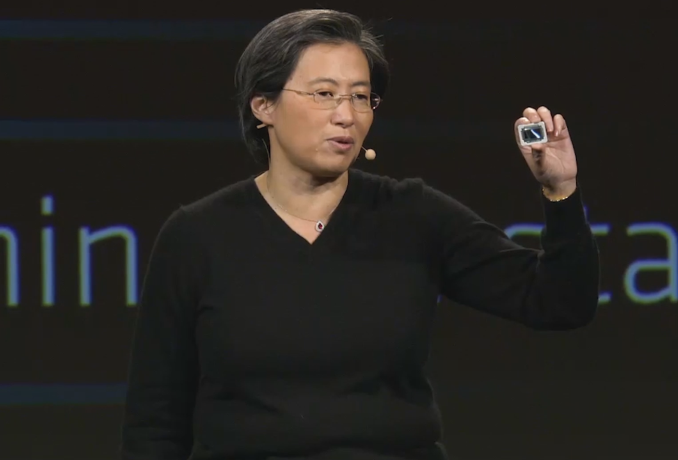
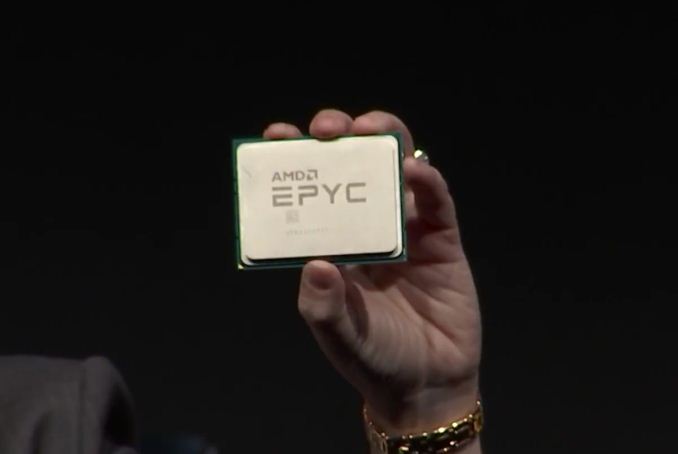
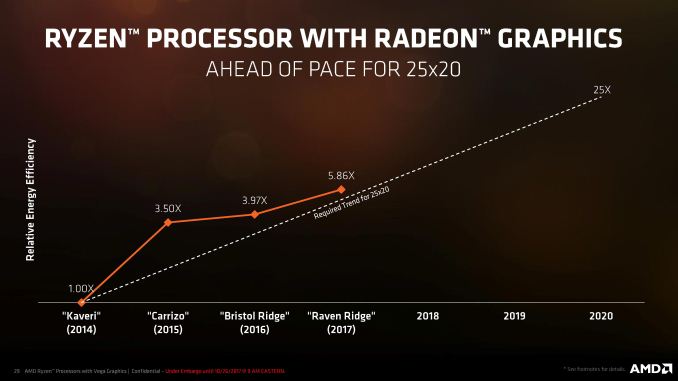
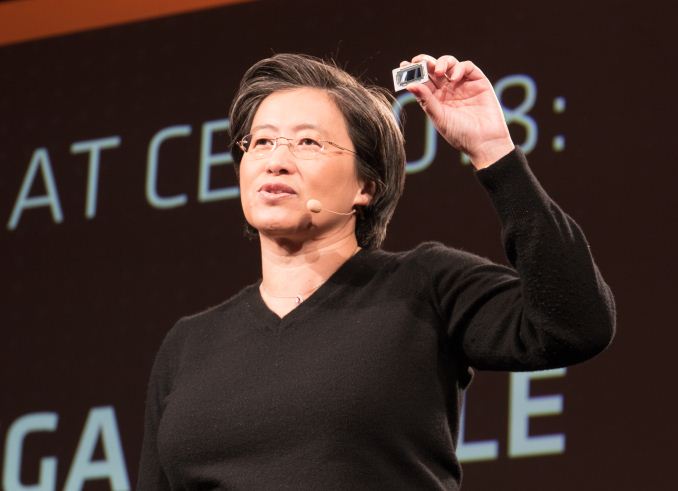








62 Comments
View All Comments
FireSnake - Wednesday, January 24, 2018 - link
Awesome input.Always nice to read interview with dr. Su
velocidad - Friday, January 26, 2018 - link
Idd nice imput but for next interview I will ask Dr. Su when we will see 8 core APU?nathanddrews - Wednesday, January 24, 2018 - link
Nice interview, Dr. Su seems like a very comfortable person to talk to, even if her answers are often vague and completely expected. It's nice to hear that they are going to push for better laptop designs from OEMs, but at the same time disappointing to know that HP, etc. are just sloughing off junk chassis alongside the most advanced APU to date. Derp.Also, I got a funny image in my head of her husband sitting at home all day playing videogames, while she's running one of the largest companies in the world. She comes home after 14 hours of meeting with investors and he's like, "Oh, I'm so glad you're home, I had a rough go of it in PUBG."
smilingcrow - Wednesday, January 24, 2018 - link
Your post made me smile but AMD are hardly one of the largest companies in the world!mode_13h - Tuesday, January 30, 2018 - link
Currently #$565 on the Fortune list, with $4.272B in annual revenues. So, not quite a Fortune 500 company. But in 2018, I'm sure.FreckledTrout - Wednesday, January 24, 2018 - link
+1, rough day in PUGB. Wouldn't that be a dream to consider that a rough day.mikato - Saturday, January 27, 2018 - link
I completely agree. She has CEO-speak of course and doesn’t give away much, but it’s still an enjoyable interview read. And the photos are pretty cool :) Buying a laptop at Best Buy and gamer husband, hehe.mode_13h - Tuesday, January 30, 2018 - link
Eh, I thought the part about her husband was a little sad, actually. At least he keeps her in touch with the market, though.I thought the answers would be totally useless, but they revealed a bit on ARM, automotive, and their collaboration with Intel. It's also nice to hear they're focused on investing for the future more than financial management, at this point.
BTW, what was that PSP reference, in the section about ARM? I don't imagine it was PlayStation Portable - not least because it's actually MIPS-based, but also discontinued for years and so not relevant to this discussion of their current activities.
HighTech4US - Wednesday, January 24, 2018 - link
Getting Vega everywhere except into gamer's hands.I am constantly seeing Now-in-stock alerts for Vega 64's at $1299 and $1399 that sell out in minutes.
If AMD was serious about getting gamer's Vega 56 and 64 they would do what Nvidia is doing and directly sell from their website Vega 56's and 64's at MSRP limit two per customer.
nathanddrews - Wednesday, January 24, 2018 - link
How does that get them into gamers' hands? The mining demand is ever greater at MSRP. Besides, many gamers are selling their GPUs to miners for a profit.